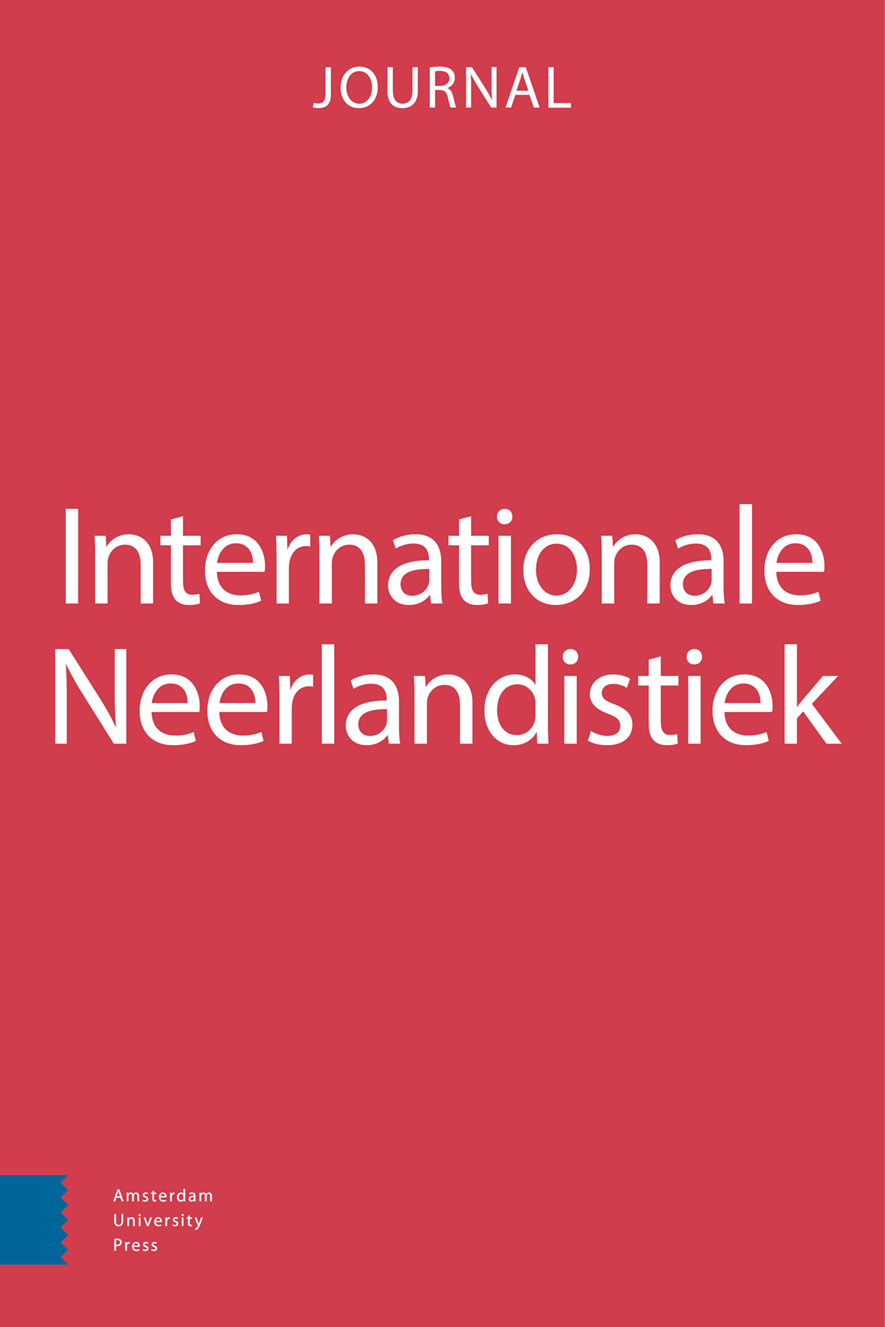- Home
- A-Z Publications
- Internationale Neerlandistiek
- Previous Issues
- Volume 48, Issue 2, 2010
Internationale Neerlandistiek - Volume 48, Issue 2, 2010
Volume 48, Issue 2, 2010
Language:
English
-
-
Nederlandse partikels in het Portugees
More LessBy Arie PosDutch discourse, modal and focus particles are frequently considered to be a translator’s nightmare. This article takes translation into Portuguese as a case in point. Although at first sight translation seems to be problematic because of the lack of ready equivalents, a contrastive survey of different ways of expressing modal aspects in Portuguese and a more context-oriented functional approach to translation reveal that m Read More
-
-
-
Modale partikels en vertaling
More LessDutch, like German, is characterized by its prolific use of modal particles, a category which is much less present in languages like English and French. This paper reports on the results of an investigation into the differences between original Dutch and Dutch translated from English of French, for which data from two parallel corpora were used. The hypothesis, that translated Dutch has a lower density of modal particle Read More
-
-
-
Modale partikels in het Nederlands als tweede taal: aanwijzingen voor een vaste verwervingsvolgorde1
More LessAuthors: Erna van Balen, Johanneke Caspers & Ton van der WoudenOn the basis of earlier research, it is likely that learners of Dutch as a second language (DSL) will have problems in acquiring modal particles, as these lexical items often have no direct counterparts in other languages. This hypothesis was tested by examining the spontaneous speech of six DSL-speakers with Spanish as their first language, and varied commands of Dutch. The results indicate that the speakers do use modal p Read More
-
-
-
Partikels volgens de schijf van vijf
More LessBy Ad FoolenParticles are a notorious problem for learners of Dutch as a foreign or second language. This paper focuses on the question of how courses for learners of Dutch deal with the Dutch particles (modal and other ones). One course, Help!, is analyzed in more detail. The findings are evaluated with the help of the so called ‘schijf van vijf’ (Westhoff 2008), a checklist which distinguishes five aspects: input, intake, focus on form, pr Read More
-
-
-
Nederlandse partikelbeschrijving in internationaal perspectief: waar zijn we eigenlijk en waar moet het toch naar toe?
More LessAuthors: Ton van der Wouden & Johanneke CaspersThis final paper sketches the current state of knowledge with respect to the Dutch particles from an extramural perspective. First, an overview is given of the knowledge we have with respect to particle types, cross-linguistic dif„ferences, and their development over time. In the second part of the paper some of the gaps in our knowledge are identified, paying attention to subjects such as description, history, variation, translatio Read More
-
-
-
Boekbespreking - Reinaert de Vos, vertaald door Karel Eykman. Amsterdam, Prometheus, 2008. ISBN 978 90 4461 2226. € 19,95. Reinaert de Vos, vertaald door Ard Posthuma. Amsterdam, Athenaeum, 2008. ISBN 978 90 253 6391 8. € 22,95. Reinaert de vos… gerapt, hertaald door Charlie May. Haarlem, uitgeverij Holland, 2008. ISBN 978 90 2511 0765 (boek plus cd). € 14,50.Een weelde voor oog en oor
More Less
-
-
-
Boekbespreking - Liselotte Vandenbussche, Het veld der verbeelding. Vrijzinnige vrouwen in Vlaamse literaire en algemeen-culturele tijdschriften (1870-1914). (Studies op het gebied van de moderne Nederlandse literatuur; 13), Gent, Koninklijke Academie voor Nederlandse Taal- en Letterkunde, 2008, 515 pp. ISBN 978 90 72474 797. € 30.
More LessBy Judit Gera
-
Most Read This Month
Article
content/journals/18769071
Journal
10
5
false
en


